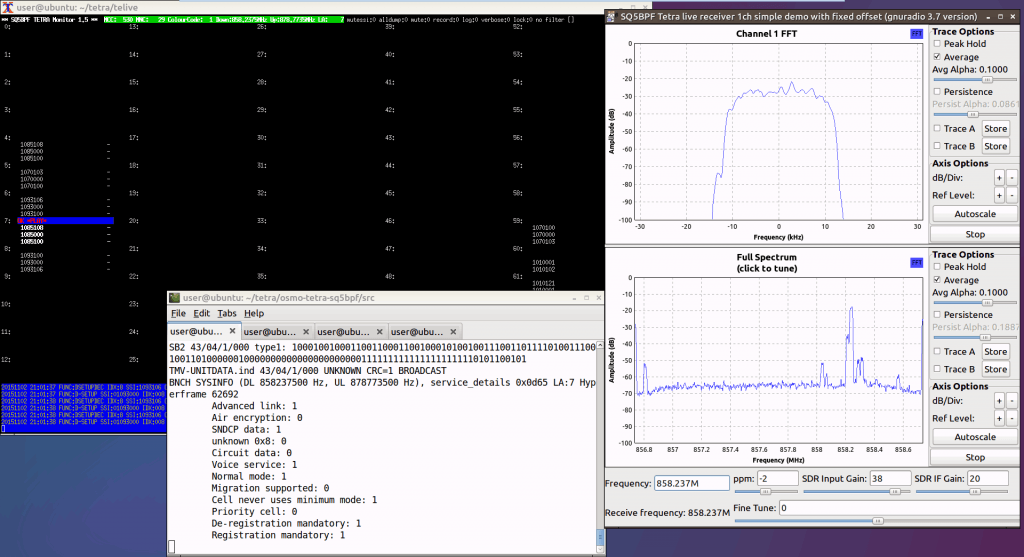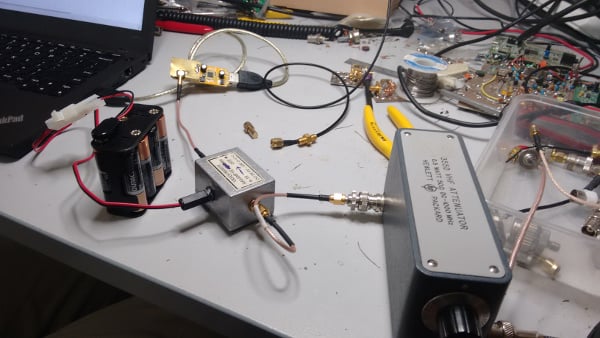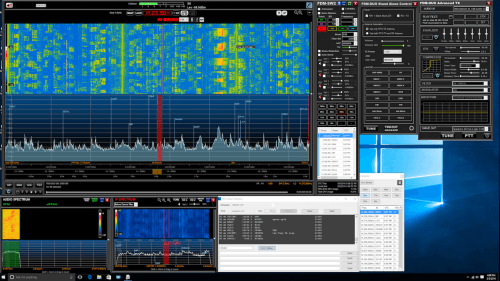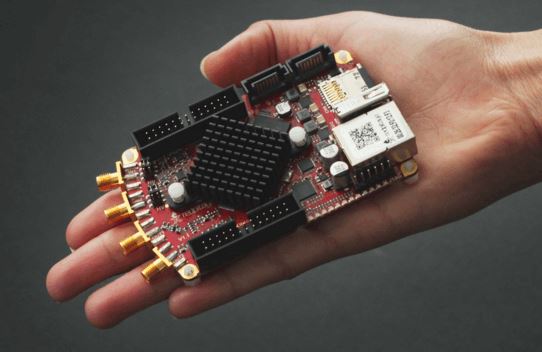Spectrum Spy: New Spectrum Analyzer Software for the Airspy
Software defined radio's can easily be used a very wideband spectrum analyzers by quickly stepping through the spectrum at the largest stable bandwidth supported. The RTL-SDR has had this functionality for some time now through software such as rtl_power and RTL Scanner.
Now Youssef, co-creator of the Airspy and programmer of SDR# has released a similar program for the Airspy called Spectrum Spy. The software comes bundled with the latest SDR# download which can be obtained from airspy.com.
The Airspy is a $199 USD software defined radio with a similar tuning range to the RTL-SDR, but it is significantly better with its 12-bit ADC and up to 10 MHz of instantaneous bandwidth. We review the Airspy, SDRplay RSP and HackRF in this post. With its large instantaneous bandwidth and fast retuning speed the Airspy makes an excellent spectrum analyzer that refreshes very quickly.
Youssef stresses that the software is still in proof of concept stages, and various features are still to be added in the future. He writes:
A new utility app is available for download with the standard SDR# package. It allows the visualization of larger frequency spans by exploiting Airspy's fast frequency tuning capability. The scanning speed is comparable to real spectrum analyzers (may be faster even!) The project is still in a PoC state, but the basic functionality provided is fully operational.
It all started when some customer wanted an example code to implement their own SA using Airspy, so I did more than a code snippet. I hope you enjoy!
We tested the Spectrum Spy software on several bands, and recorded short videos shown below to show how fast it is.
20 MHz Bandwidth Mobile Phone Band
50 MHz BCFM Band
100 MHz Bandwidth Mobile Phone Band
Includes the uplink and downlink portions. We used our mobile phone to make a call and you can see the uplink at 895 MHz.
1 GHz Full Spectrum
Tweeted Photos
Over on Twitter @uhf_satcom has also been testing out Spectrum Spy and has got some good shots of Ku and L-band satellite bands.
@Sdrsharp Spectrum Spy + AirSpy SDR on IF of Ku-Band LNB pointed at 36E - really useful tool for satellite nerds! pic.twitter.com/dYwVJVIOz1
— UHF Satcom (@uhf_satcom) March 14, 2016
The new SpectrumSpy from @sdrsharp is my new favorite software tool! Here is 50MHz of Inmarsat @ 15W CF=1545MHz Nice pic.twitter.com/qKI0sc4DnA
— UHF Satcom (@uhf_satcom) March 14, 2016
Here @supertrack_it has been using Spectrum Spy to help with the tuning of his 1420 MHz filter.
Tuning my 1420 MHz interdigidital filter with @airspy_com Spectrum Spy is now a piece of cake pic.twitter.com/jo9gclf1aQ
— supertrack (@supertrack_it) March 15, 2016






